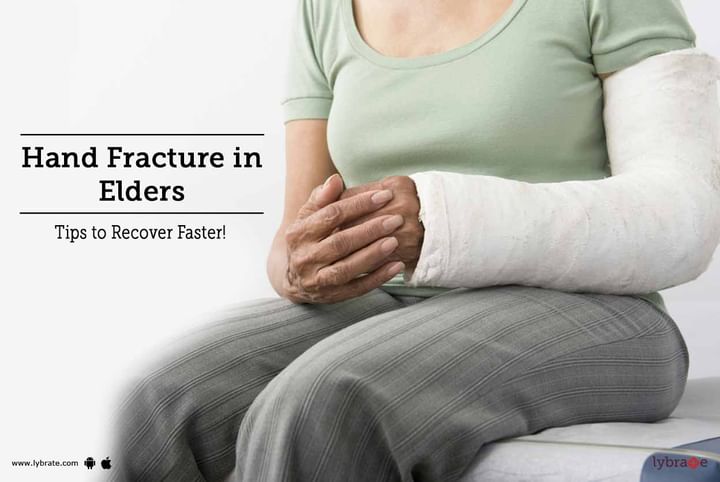Get the App
For Doctors
Login/Sign-up
Last Updated: Jan 10, 2023
BookMark
Report
Hand Fracture In Elders - Tips To Recover Faster!
Dr. Vipul KheraOrthopedic Doctor • 27 Years Exp.M. Ch. (Ortho), DNB (Orthopedics), Diploma In Orthopaedics (D. Ortho), MBBS
The wrist is one of the most common areas that can go through a fracture or an injury. This is especially true for patients over the age of 65 years. There are many kinds of fractures, including simple or closed fractures, as well as compound or open fractures and comminuted or greenstick fractures. Hairline fractures are considered as the most common kind of fracture, and can be easily detected in an x-Ray. While it is easy for children to recover from a fracture, it is that much more difficult for the elderly to recover from one.
Read on to know the various ways in which the elderly can recover from a hand fracture.
- Time and trauma: Usually, an adult will take six to eight weeks to recover from a fracture completely. Children take almost half the time to recover as their bones are more tender and willing to fuse back together in lesser time, which is not always possible for more mature bones. Also, the elderly experience more trauma when it comes to a fracture and broken bones. Further, these individuals are already a part of a high risk group when it comes to such fractures due to problems with vision, gait and even the bone density.
- Physiotherapy: This is one of the most important parts of the treatment that elderly people have to follow after a hand fracture. This can help them in restoring normal mobility in the hand and wrist eventually, with regular practice. Physiotherapy must be practiced under the guidance of a trained expert, and thereafter, the exercises can be continued at home on a regular basis. These exercises will help in restoring the strength of the hand as well as the wrist.
- Changes in the hand: The knuckles and wrists may look different after a fracture. This depends on the kind of injury and fracture that has been sustained by the patient. The different types of hand fractures can occur on the knuckles or right below them, in the shaft of the main bone, at the base of the bone, on the wrist, and also with a dislocation of the bone and wrist. These kinds of changes should be referred to an orthopaedic surgeon who can help by inserting pins and braces to repair the fracture and bring the hand back to normal.
- Medication and self care: It is important to keep your hand above the heart level at all times during the recovery process. Also, an ice pack can help in stemming the pain. Further, you can wear a splint and take pain relief medication as prescribed by your doctor, in keeping with any other ailments you may be suffering from.
In case you have a concern or query you can always consult an expert & get answers to your questions!



+1.svg)
